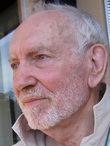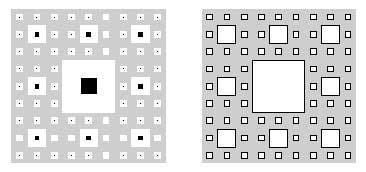Residence United Kingdom | Nationality British Name Lionel March | |
 | ||
Institutions University of CambridgeUniversity of WaterlooOpen UniversityUniversity of California, Los Angeles Books Urban Space and Structures, The geometry of environ, Architectonics of humanism, Some elementary models of, Dynamic Urban Models B | ||
Lionel March (born in Hove, United Kingdom, 1934) is a British mathematician, architect and digital artist, perhaps best known for his early pioneering of computer-aided architecture and art.
Contents

Early life and education
March was born in Hove, England in 1934. As a teenager, his interests included mathematics, theatre and design. At the age of 17 he wrote an original mathematical paper generalizing the theory of complex numbers to n-dimensions, for which the computer pioneer Alan Turing wrote, "You have done this research with imagination and competence." For this, March was awarded a state scholarship to read mathematics at Magdalene College, Cambridge in 1954, where he earned a B.A. and Doctor of Science. During his studies, March was the President of the Cambridge University Opera Group, for which he designed a lot of stage sets. Early work also included illustrations, and book cover designs for Cambridge University Press.
Later life and career
March was the first director of the Centre for Land Use and Built Form Studies, now the Martin Centre for Architectural and Urban Studies, Cambridge University. He has held professorships in systems engineering at the University of Waterloo, Ontario, in design technology at the Open University, Milton Keynes, and since 1984 in the Graduate School of Architecture and Urban Planning, UCLA, where he was the chair in the period 1985–1991 and is currently a professor emeritus in design and computation.
March also experimented in serial art since the 1960s and became one of the world's first digital artists. In 1962 he held an exhibition titled "Experiments in serial art" in the Institute of Contemporary Arts in London, and since then he has completed 50 years of art production working with the golden ratio, the Platonic solids, and geometric and mathematical principles in design.
March's biggest contribution is in architecture and computation. In 1965 he worked as an assistant of Leslie Martin for the project Whitehall: a Plan for a National and Government Centre, and as such he made one of the first computer-aided architectural investigations. Since then he devoted himself in research, writing and editing numerous books. He is the founding editor of the international research journal Planning and Design, which is one of the four sections of Environment and Planning.
Lionel March was the general editor of the 12-volume Cambridge Architectural and Urban Studies, and founding editor of the journal Environment and Planning B: Planning and Design. Among the books he has published as editor are The Geometry of Environment, Urban Space and Structures, The Architecture of Form, R. M. Schindler: Composition and Construction; and as author The Architectonics of Humanism: Essays on Number in Architecture, and with Kim Williams and Stephen Wassell The Mathematical Works of Leon Battista Alberti; and as guest editor Shape and Shape Grammars.
Awards and honours
March is the recipient of the Harkness Fellowship of the Commonwealth Fund (1962).
